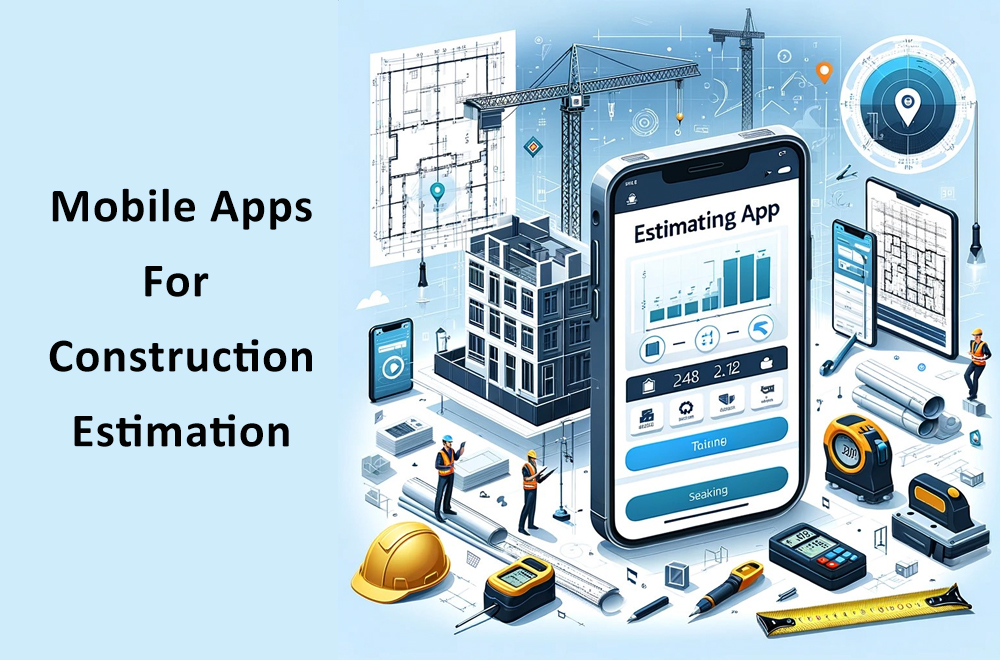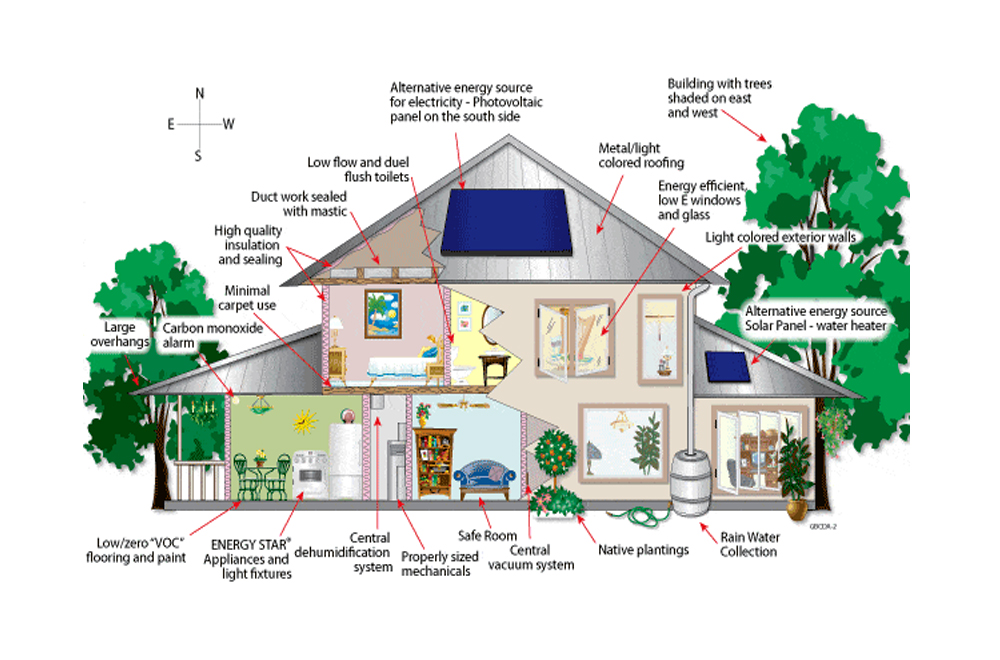In construction industry, where every project depends on precision and efficiency, having a successful and well build estimating department is important. Whether you’re a pro in the industry or just getting started, understanding the ins and outs of creating a top-notch estimating department is essential for your company’s growth and profitability.
Table of Contents
ToggleHow to Build Estimating Department – The Key Steps
This building process consists of several key steps, each vital in shaping the department’s efficiency and effectiveness. Here’s what we have covered all for you from scratch.
1. Defining Your Goals
Clear purpose and direction is the first step towards estimating department build. Here, we’ll look on setting clear objectives and aligning them with your company’s broader vision.
Setting Clear Objectives
Imagine embarking on a road trip without a destination in mind. Without defined objectives, you’re left wandering, unsure where you’re heading. The same principle applies to your estimating department. Setting clear goals is your roadmap, guiding your department toward success.
Your goals should be specific, measurable, achievable, relevant, and time-bound (SMART). Specificity ensures that your goals are well-defined, leaving no room for ambiguity. Measurability allows you to track progress and determine when a goal has been achieved.
Achievability ensures that your goals are realistic and within reach. Relevance ensures that your objectives align with your department’s purpose and the company’s overall vision. Time-bound sets a deadline, creating a sense of urgency and accountability.
For example, a specific goal might be to reduce estimating errors by 20% within the next 12 months. This goal is measurable, as you can track error rates. It’s achievable with the right strategies, relevant to the department’s efficiency, and time-bound with a clear 12-month deadline.
Aligning Goals with Company Vision
Your estimating department doesn’t operate in isolation; it’s an integral part of your company. Your department’s goals must align seamlessly with your company’s broader vision and mission to achieve optimal results.
Consider your company’s long-term objectives.
- What role does your estimating department play in fulfilling these objectives?
- How can your department’s goals contribute to the company’s growth, profitability, and overall success?
Alignment ensures that your estimating department works harmoniously with other departments and initiatives. It prevents fragmentation and promotes a unified, company-wide effort towards shared goals.
By setting clear, well-defined objectives and ensuring they align with your company’s vision, you lay a solid foundation for your estimating department’s progress.
2. Assessing Current Resources
Before you can chart a course to build a estimating department, it’s essential to take a good, hard look at your current resources.
Evaluating Existing Estimating Capabilities
Every journey begins with a thorough understanding of your starting point. In the context of establishing an estimating team, this means assessing your current estimating capabilities.
Start by examining the skills and expertise of your existing team members.
- Who are your estimators, and what is their level of experience?
- Do they have a firm grasp of industry best practices and the latest technologies?
This assessment provides insights into the strengths and weaknesses of your current team. Additionally, consider the tools and software your department currently uses for estimation. Are these resources up-to-date and efficient, or do they hinder the estimation process? Understanding the state of your tools is essential for improving your department’s workflow.
Identifying Strengths and Weaknesses
Once you’ve conducted a comprehensive evaluation of your estimating department, it’s time to identify its strengths and weaknesses.
Strengths can be the skills and expertise of certain team members, effective processes that are already in place, or a well-established culture of collaboration. Recognizing these strengths allows you to leverage and build upon them.
- Conversely, pinpointing weaknesses is equally vital. Drawbacks might include:
- Outdated software.
- Lack of specific expertise in certain areas.
- Inefficient communication within the team.
Acknowledging these areas needing improvement is the first step towards enhancing your estimating capabilities.
Remember that this assessment is not meant to criticize your department but to empower it.
3. Recruiting the Right Estimators
Building a estimating department is akin to crafting a winning sports team. To excel, you need to hire the right estimators, and in this case, that means finding estimators with the ideal blend of technical expertise, unwavering attention to detail, and exceptional problem-solving skills.
Finding Estimators with Technical Expertise
Technical expertise is the backbone of any competent estimating department. The individuals you bring on board should possess a deep knowledge of the construction industry, its practices, and the various facets of cost estimation.
When seeking talent, look for candidates with relevant education and certifications. These qualifications provide a solid foundation of knowledge that can be applied in real-world estimating scenarios. For example, estimators with degrees in construction management, engineering, or related fields often bring valuable technical skills.
In addition to formal qualifications, consider the candidate’s prior experience. Estimators who have worked on various projects in different roles can offer a practical perspective and the ability to navigate complex estimating challenges.
Emphasizing Attention to Detail and Problem-Solving Skills
More than technical expertise is needed for estimators; attention to detail is equally critical. In cost estimation, even the most minor oversight can lead to significant errors and costly consequences. Estimators must possess an innate ability to scrutinize every detail, ensuring precision in their calculations.
Furthermore, estimators should be skilled problem solvers. Construction projects often present unforeseen challenges, and estimators must adapt quickly. Their problem-solving skills come into play when reconciling discrepancies, addressing unexpected issues, and finding creative solutions to keep projects on track.
When recruiting estimators, interview questions and assessment tasks can help gauge their attention to detail and problem-solving abilities. Encourage candidates to share examples of how they’ve resolved complex estimating challenges or maintained accuracy in their work.
4. Developing Estimating Training Plans
To Build a estimating department is not a one-time effort; it’s an ongoing process. We’ll emphasize the significance of continuous learning and keeping your estimators updated with the best industry practices.
Continuous Learning
In the ever-evolving construction world, staying static is akin to falling behind. To maintain a competitive edge, your estimating department must invest in ongoing training plans. Continuous learning is not merely an option; it’s a necessity.
The construction industry witnesses regular technological advancements, regulation shifts, and changing best practices—estimators who fail to adapt risk becoming outdated and less effective. Continuous learning ensures your estimators are well-versed in the latest trends, tools, and methodologies.
Moreover, ongoing training fosters a culture of improvement within your department. It encourages your team to seek new knowledge, explore innovative solutions, and fine-tune their skills. This commitment to learning sets the stage for a dynamic, forward-thinking estimating team.
Keeping Estimators Updated with Best Practices
To keep your estimators updated with the best practices, you need a well-structured training program. This program should encompass a variety of elements, such as workshops, seminars, online courses, and participation in industry conferences.
Encourage your estimators to pursue certifications relevant to their field, such as the Certified Professional Estimator (CPE) designation. These certifications not only validate their expertise but also require ongoing education to maintain their status.
Additionally, consider establishing mentorship programs within your department. Pairing experienced estimators with newer team members can facilitate knowledge transfer and skill development.
Regularly review your training program to ensure it aligns with the latest industry standards. Be open to feedback from your estimators about what areas they feel would benefit from further training.
5. Equipping with Right Tools and Resources
In the digital age of construction, having the right tools is the backbone of a well build estimating department. This section explores the pivotal role of cloud-based estimating software in streamlining workflows and enhancing efficiency.
Leveraging Cloud-Based Estimating Software
Gone are the days of manual calculations and sprawling spreadsheets. Modern estimating departments thrive on the power of technology, and at the heart of this transformation is cloud-based estimating software.
Cloud-based software offers numerous advantages. It allows estimators to access their tools and data from anywhere with an internet connection, fostering flexibility and remote collaboration. This accessibility means that your estimators can work on estimates, review projects, and share information in real time, regardless of their physical location.
Moreover, cloud-based software often comes with advanced features that expedite the estimating process. These features may include databases of construction costs, templates for various project types, and integration with other project management and accounting tools. Such integrations streamline workflows, reduce errors, and enhance the overall efficiency of your estimating department.
Streamlining Workflows and Efficiency
Efficiency is the name of the game in modern construction. With multiple projects to estimate, tight deadlines, and a demand for precision, any tool that can streamline workflows is a game-changer.
Cloud-based estimating software not only accelerates the estimation process but also standardizes it. This standardization ensures consistency across all estimates and reduces the likelihood of errors. It also simplifies collaboration within your estimating team, as multiple team members can work on the exact estimate simultaneously.
Integrating cloud-based software with other tools, such as project management and accounting systems, creates a seamless flow of data, saving time and minimizing manual data entry. With automated calculations and the ability to import project details, your estimators can focus on what matters most – the accuracy of their estimates.
Furthermore, the reporting capabilities of cloud-based software enable your department to generate detailed estimates, track costs, and provide clients with transparent, professional documents.
6. Fostering Collaboration
How you build estimating department is not solely about individual expertise; it’s also about how well your team works together.
Creating a Collaborative Environment
Collaboration is the secret sauce that elevates an estimating department from good to great. The construction industry is inherently team-oriented, and a collaborative approach is crucial to ensuring every project’s progress.
To foster collaboration, encourage your estimators to work together seamlessly. This might involve assigning them to estimation teams, where each member brings their unique skills and perspectives to the table. Collaboration should extend beyond estimators and include project managers, architects, engineers, and other relevant stakeholders in the estimation process. Their insights can provide a more comprehensive view of the project.
Creating a collaborative environment also means breaking down silos within your department. Estimators should feel comfortable sharing ideas, information, and resources. This exchange of knowledge can lead to innovative approaches and more accurate estimates.
The Role of Open Communication
Collaboration and open communication go hand in hand. Open lines of communication ensure that all team members are on the same page working toward a common goal.
Encourage your estimators to communicate regularly and transparently. Whether discussing project specifications, potential challenges, or progress updates, communication is the glue that holds your department together.
In addition to verbal communication, use technology to facilitate collaboration. Implement project management software that allows team members to share documents, track project changes, and communicate in real-time. This technology ensures that everyone involved in the estimation process can access the most up-to-date information.
Moreover, establish regular team meetings or huddles where estimators can discuss ongoing projects, brainstorm solutions, and provide feedback. These meetings serve as a forum for sharing insights, addressing concerns, and aligning efforts.
7. Continuous Evaluation
The continuous evaluation is the compass that keeps you on the right path.
The Necessity of Regular Feedback
Feedback is the lifeblood of improvement. In your estimating department, regular feedback is indispensable for several reasons. It provides a mechanism for understanding how well your team is performing, where improvements can be made, and what strategies yield the best results.
Encourage a culture of open and constructive feedback within your department. This means conducting regular performance reviews, both formal and informal, to provide insights into individual and collective progress. Celebrate successes and use setbacks as opportunities for growth. Constructive feedback should be a two-way street, allowing estimators to voice their concerns, provide input, and suggest improvements.
Moreover, seek feedback from your clients and project stakeholders. Their perspectives can offer valuable insights into your department’s performance, including the accuracy of estimates, project delivery timelines, and overall satisfaction.
Measuring Progress and Identifying Areas for Improvement
Regular feedback is the tool by which you measure your department’s progress and identify areas for improvement. It offers a benchmark against which you can assess the effectiveness of your strategies and the development of your estimators.
To measure progress, establish key performance indicators (KPIs) specific to your department’s goals. These KPIs may include accuracy of estimates, on-time project delivery, and client satisfaction ratings. Periodically review these metrics and adjust your strategies accordingly.
Identifying areas for improvement is a proactive approach to enhancing your department’s efficiency. If feedback reveals recurring issues or challenges, it’s a sign that adjustments are needed. Whether it’s providing additional training in a specific area, upgrading your software, or reshaping workflows, feedback guides your decision-making.
8. Appreciate Successes
Paying worth to success of your estimating department is a vital component. And it leads to create a motivated, high-performing team.
Boosting Team Motivation
Motivated team members are the driving force behind any thriving department.
Here’s why it matters.
Accomplishments, whether big or small, provide a sense of achievement and acknowledgment. They validate the hard work and dedication that your estimators put into their tasks. Celebrating successes empowers your team members and makes them feel valued and appreciated.
Moreover, motivated estimators are likelier to remain committed to their roles and invest in their ongoing growth. They take pride in their work, translating into higher-quality estimates and increased efficiency.
Recognizing Achievements
Recognition of achievements can take various forms. It might involve acknowledging an estimator’s role in delivering a particularly challenging project on time and within budget. It could also entail celebrating milestones, such as achieving a high level of accuracy in estimates.
Consider implementing a recognition program within your department. This program can include awards, certificates of achievement, or a public acknowledgment of the estimator’s contribution to a project’s success. Recognizing achievements not only boosts the recipient’s motivation but also sets a positive example for others.
Furthermore, celebrate as a team. When your estimating department reaches a collective milestone or consistently delivers accurate and on-time estimates, celebrate the teamwork that made it possible. Team celebrations promote unity and reinforce the importance of collaboration.
What Does An Estimating Department Do?
An estimating department in a construction company prepares cost estimates for construction and verifies the work for maximum estimate accuracy. The assessments help contractors choose profitable work through competitive bidding.
Estimators analyze production processes to determine how much time, money, and labor a project needs. They also:
- Analyze plans, bills of quantities, and other project documentation
- Research, source, negotiate, and obtain the best prices and quotes from suppliers and subcontractors
- Coordinate and oversee the vendors and subcontractors in the bid process
- Communicate the requirements to the client
Estimators should have Mathematics, Statistics, Data Analysis, Analytical abilities, and Negotiation skills.
The Importance of An Estimating Department
Practical cost estimation goes beyond mere number crunching. It’s a strategic process that involves thorough analysis, meticulous planning, and calculated risk assessment. Without a proficient estimating department, you’re navigating through uncharted waters without a map.
With accurate cost projections, your construction projects are protected from cost overruns, delays, and potential financial pitfalls. This is why building and maintaining a robust estimating department is crucial.
Conclusion
In the process to build a best estimating department, we’ve explored the critical steps, principles, and strategies essential for your department’s success.
By following this techniques and implementing the insights and strategies discussed, you’ll be well on your way to establishing a highly competent estimating department that not only meets industry standards but exceeds them. Your department will be a valuable asset, ensuring the success of your construction projects and contributing to the growth and profitability of your company.






